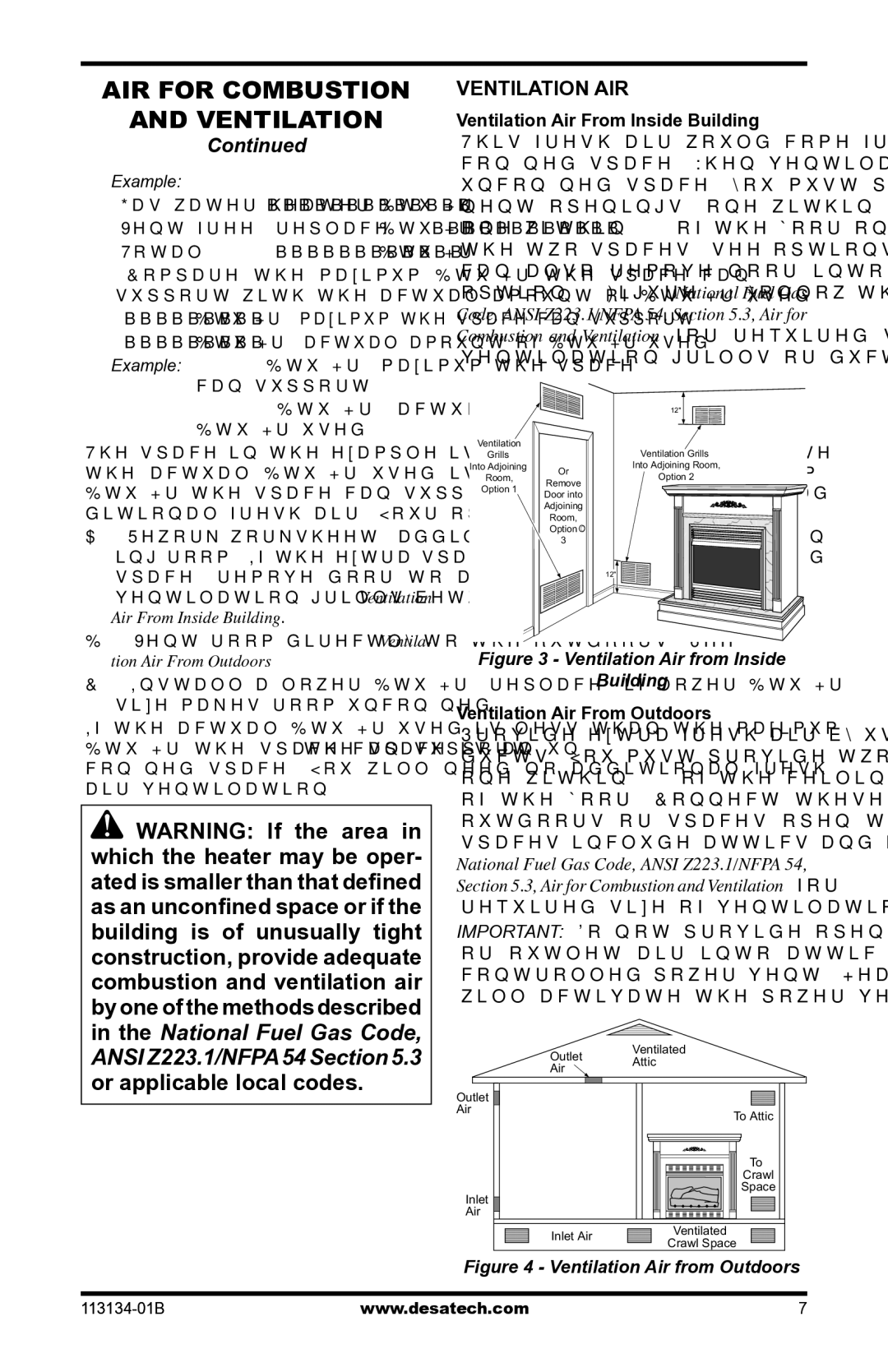VTGF33NRB, VTGF33PRB specifications
Desa VTGF33PRB and VTGF33NRB are advanced heating solutions that combine innovative technology and design for optimal performance and user convenience. These models are well-suited for residential and commercial applications, providing efficient heating while enhancing the overall aesthetic of any space.One of the main features of the VTGF33PRB and VTGF33NRB is their high-efficiency ratings, which allow them to deliver effective heating with minimal energy consumption. This efficiency not only helps users save on energy bills, but it also makes these models environmentally friendly, aligning with modern sustainability goals.
Both models utilize advanced infrared heating technology, which generates heat by directly warming objects and people in the room rather than heating the air. This results in a more comfortable and even distribution of warmth, providing immediate relief from cold temperatures. The infrared heating method is particularly beneficial in large or drafty spaces, as it can significantly reduce heating times and energy usage.
In terms of design, the VTGF33PRB features a sleek, modern appearance that can easily complement any décor. Its robust construction ensures durability, making it suitable for long-term usage. The VTGF33NRB, on the other hand, offers a more traditional aesthetic, perfect for those who prefer classic designs. Both models are user-friendly, designed with intuitive controls that allow for easy operation and temperature adjustments.
Another noteworthy characteristic of the Desa VTGF33 series is their safety features. Each unit is equipped with advanced safety mechanisms, including tip-over protection, overheat shut-off, and a sturdy base to prevent accidents. These safety features provide peace of mind for users, especially in households with children or pets.
The VTGF33PRB and VTGF33NRB also incorporate quiet operation technology, ensuring that heating is achieved without disruptive noise. This makes them ideal for use in bedrooms, offices, or any space where tranquility is desired.
Overall, the Desa VTGF33PRB and VTGF33NRB are exemplary models that showcase the harmonious blend of efficiency, safety, and design. Their advanced features and technologies make them reliable choices for anyone looking to enhance their heating solutions while maintaining comfort and style. With their commitment to quality and innovation, Desa continues to lead the way in the heating industry.

